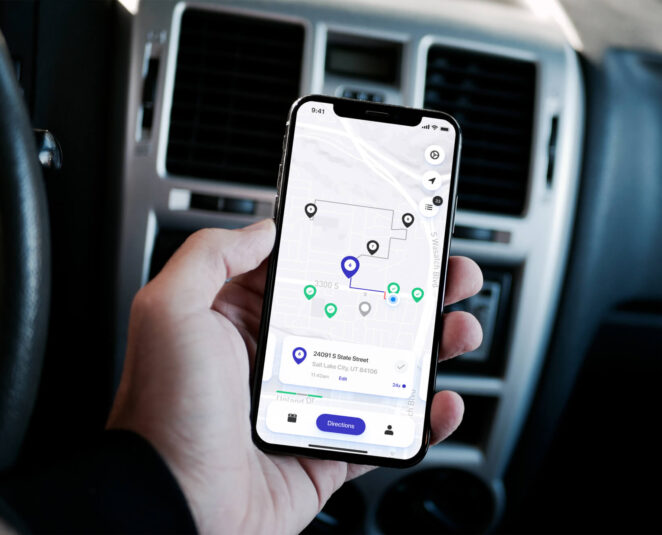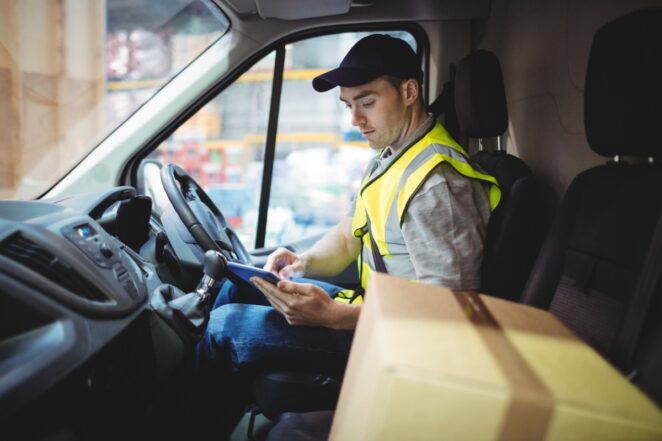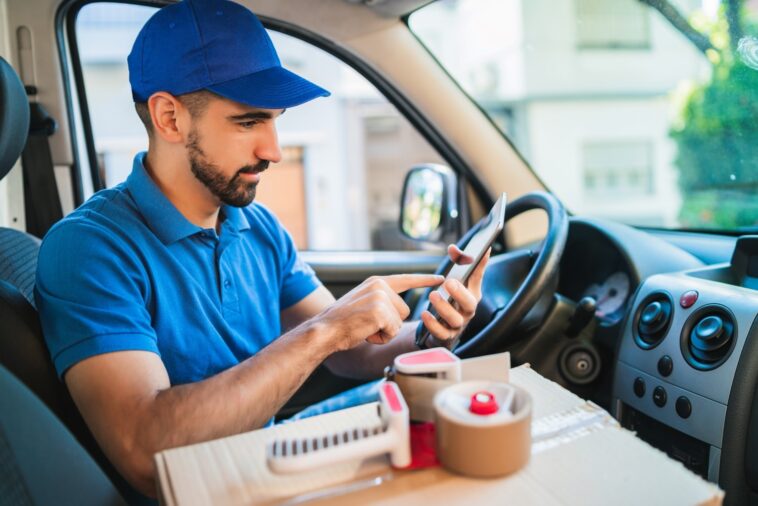Getting your team home safely after long hours on the road is a non-negotiable priority. Drivers face challenges daily, ranging from accidents to navigating unsafe areas.
With the right strategies and tools, you can create a secure environment that benefits your team and business alike. Let’s get into how to make it happen.
Key Points
- Safety starts with proper planning and awareness.
- Lone worker apps provide robust safety tools.
- Comprehensive training boosts confidence and preparedness.
- Real-time tracking technology offers critical updates.
- Open communication is vital for emergency situations.
Equip Drivers with Advanced Technology for Safety
Safety tools have evolved beyond first-aid kits and flashlights. A lone worker app is a standout solution for ensuring safety on the go. This app transforms a smartphone into a powerful safety device, equipped with features like discreet alarms, automatic fall detection, and check-in systems.
What sets this app apart is its ability to integrate with devices like smartwatches and body-worn cameras. For example, the fall detection feature raises an alarm even if someone can’t physically press a button. It also offers “Travelsafe,” a feature that provides welfare checks throughout a journey, which is invaluable for those traveling through high-risk areas.
Investing in tools like this doesn’t just show care for your team—it actively reduces risk and liability.

Training ─ The Foundation of Safer Operations
Even the most advanced tools are useless without proper training. Providing knowledge and skills equips drivers to handle challenges confidently and make informed decisions.
Interactive sessions, such as role-playing potentially dangerous scenarios, can be an effective way to prepare your team. Instead of boring lectures, keep training practical, engaging, and directly applicable to real-world situations.
Key training areas:
- Recognizing unsafe environments before issues escalate.
- Responding to emergencies, from breakdowns to confrontations.
- Proper use of tools, including apps and safety devices.
- Navigating routes safely and effectively.
Training is not a one-off task. Regular refreshers and updates keep safety top of mind and ensure drivers are equipped to handle new risks.
Routes Aren’t Just About Efficiency—Safety Matters
Planning the most efficient route often means shortcuts, but shortcuts can lead to unsafe situations. Focus on mapping out routes that are safe, well-lit, and frequently traveled. A GPS system with live traffic and neighborhood safety alerts can help avoid high-risk areas.
Encourage drivers to provide real-time feedback on routes. If someone encounters construction, unexpected roadblocks, or risky zones, they should notify the team immediately. Collaborative updates ensure safer operations for everyone.

Safety Essentials Every Vehicle Should Have
No one should hit the road without a basic safety kit. It’s about being prepared for the unexpected, whether it’s a flat tire or an emergency situation.
Recommended essentials:
- A fully stocked first-aid kit for injuries.
- Flashlights and extra batteries for nighttime visibility.
- A high-visibility vest to stay safe in roadside situations.
- Emergency phone chargers to avoid being stranded without communication.
- Basic repair tools like a tire iron and jack.
A safety kit might seem like a small detail, but it can make a huge difference during emergencies.
Communication ─ The Lifeline for Your Team
Staying connected during a shift is critical for safety. Without reliable communication channels, small problems can escalate quickly. Equip your team with devices or tools that allow for constant updates.
Regular check-ins add a layer of accountability. Set schedules for updates, whether hourly or at specific points in the route. It reassures everyone involved and makes it easier to respond to unexpected situations.
Apps that offer location sharing or automatic updates can streamline this process. With the right tools, you’ll always know where your team is and can act quickly if something goes wrong.

Supporting Mental Health for Safer Operations
Long hours, high-pressure situations, and constant navigation through traffic can wear anyone down. Safety isn’t just about physical well-being—it’s about mental health too.
Encourage open dialogue with your team about stress, burnout, or any concerns they may have. Providing access to counseling services or even informal check-ins can make a big difference. When people feel valued, they’re more likely to make sound decisions on the job.
Promote a culture where safety and well-being are priorities, not afterthoughts. A happier, less stressed team is a safer one.
Use Tracking Technology to Stay Informed
GPS tracking tools are invaluable for real-time updates on locations, routes, and stops. They’re not just about accountability—they’re about safety. Knowing where your team is at all times allows you to respond quickly to emergencies.
Features to look for in a tracking system
- Geo-fencing alerts when someone enters a high-risk area.
- Automatic updates on route progress.
- Integration with other safety tools for seamless operation.
Tracking tools don’t just protect the team—they also provide peace of mind for managers and loved ones waiting at home.
Encourage Safe Practices with Positive Reinforcement
Safety protocols can sometimes feel like extra work, so it’s important to motivate your team to stick to them. Positive reinforcement can make a big difference.
Reward those who consistently follow safety guidelines. It could be as simple as public recognition or a small incentive, like a gift card. Highlighting good practices creates a culture where safety is celebrated, and not seen as a chore.

Proactive Steps to Minimize Risks
Improving safety doesn’t require a massive overhaul. Small, consistent efforts add up over time. Start with practical steps that have an immediate impact.
- Regular vehicle inspections should be conducted to catch mechanical issues early.
- Create a clear safety protocol and communicate it regularly.
- Equip your team with the right tools for every situation.
- Monitor routes and adjust plans as needed for safer alternatives.
Every step you take improves the working environment and reduces risks for everyone involved.
Adding Value Through Routine Check-Ins
Routine check-ins can transform the way you approach safety. Schedule regular reviews with drivers to discuss concerns, share updates, and refine protocols.
Use check-ins to highlight recent incidents and how they were resolved. Learning from real-world experiences keeps everyone alert and engaged.
Safety is a Shared Responsibility
Protecting drivers isn’t a one-sided effort. It requires teamwork, communication, and a proactive approach to addressing risks. Equip your team with the tools, knowledge, and support they need to navigate their jobs confidently.
Investing in safety measures doesn’t just protect your team—it also boosts morale, reduces turnover, and creates a positive workplace culture. When safety becomes a shared goal, everyone wins.
By combining technology, training, and a commitment to well-being, you can create an environment where every shift ends on a positive note.



